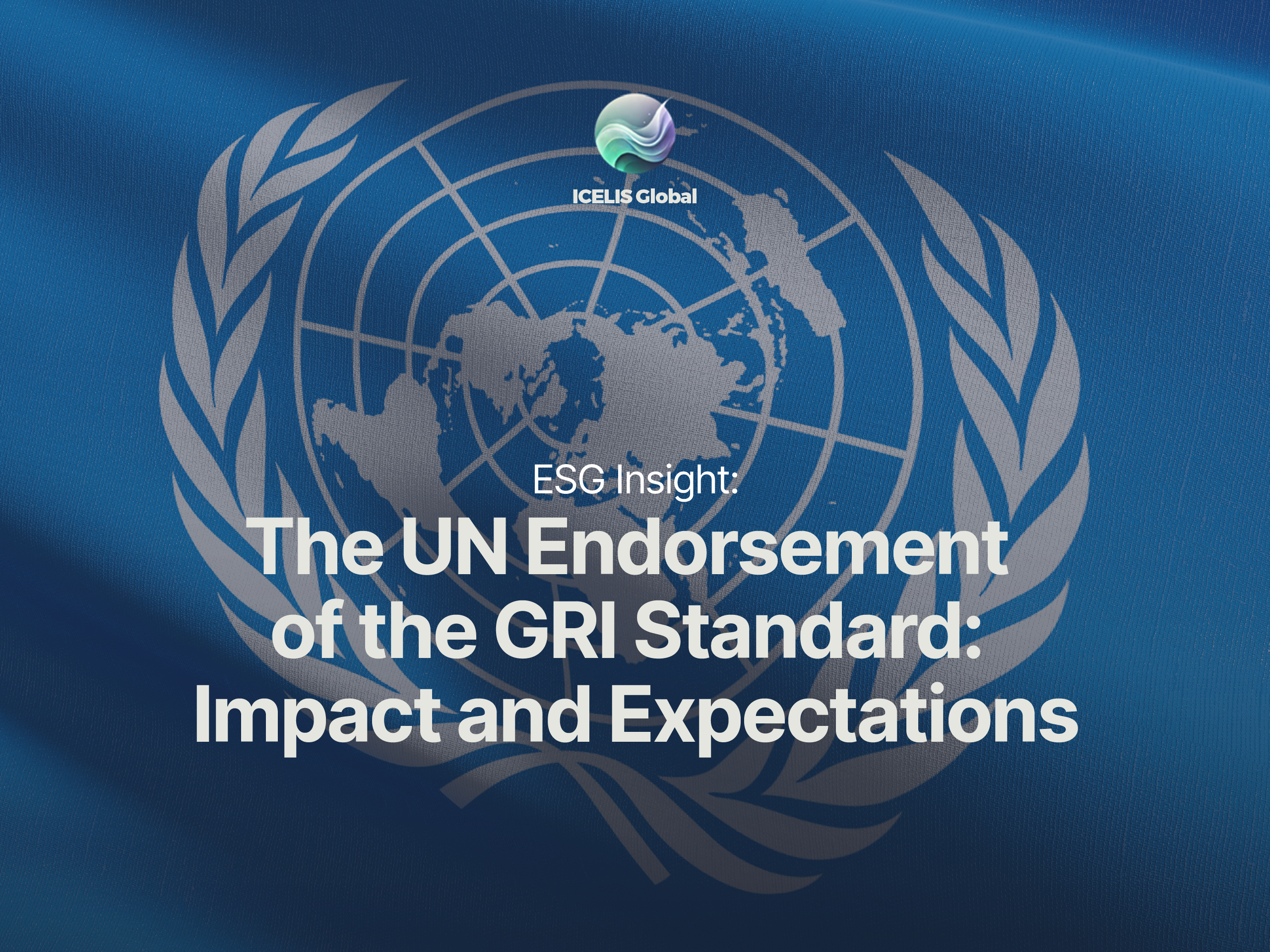The Fourth International Conference on Financing for Development (FfD4) held in Seville from June 30th to the 3rd of July 2025 resulted in the document “Compromiso de Sevilla,” or Seville Commitment. The Summit was held with the general aim of reducing the widening gap in financing the Sustainable Development Goals (SDGs).
For the Global Reporting Initiative (GRI), the “Compromiso de Sevilla,” was a big win as it was the first time that the United Nations (UN) had explicitly recognised GRI Standards. In paragraph 34e of the document the UN rallied for GRI standards as well the International Sustainability Standards Board (ISSB) to be incorporated into sustainability reporting.
This insight will delve into what the GRI does, its popularity, what sets it apart from many other ESG reporting standards, and the impacts and expectations of the UN’s assent of the GRI Standard at the FfD4.
The Global Reporting Initiative (GRI)
Since 1997, the Global Reporting Initiative (GRI) has created a global common language for companies not only to understand but also report on their economical, environmental, and social impact in order to advance sustainable development through greater transparency and accountability.
The Popularity of GRI Standard
The GRI Standard remains the most popular guideline and standard for sustainability reporting with 77% of the largest companies in the world adopting it as their preferred sustainability reporting standard according to KPMG. The 2024 edition of the KPMG Sustainability Reporting Survey further revealed that GRI adoption rates were 75% in Asia-Pacific, 71% in Europe, 70% in the Americas, and 64% in the Middle East & Africa.
What Sets the GRI Standard Apart?
The GRI standard is considered ahead of similar reporting metrics for the following reasons:
Cross-border Comparability
GRI Standard is a very distinct system as it provides cross-border comparability. This makes it easier to meaningfully compare the Environmental, Social and Governance (ESG) impact of companies in different countries unlike many other sustainability reporting standards.
Double Materiality Approach
The double materiality approach is an ingenious approach used in the curation of the GRI Standard that recognizes sustainability impact reporting and strengthened financial reporting as being both equally being a necessity. It examines not only how companies are impacting the economy, environment and society but also how they are impacted by external factors to assess their opportunities and risk. This approach distinguishes the GRI Standard from other sustainability reports.
Impact of the UN’s Endorsement of the GRI Standard
With the UN practically giving the GRI standard a much needed “green light”, these are some of the outcomes we can expect:
Further Adoption of GRI Standard for sustainability reporting
With the vote of confidence received from the UN at the FfD4 Summit, the popularity enjoyed by the GRI Standard already enjoys will further skyrocket with further adoption of GRI Reporting Standard by companies around the globe with regard to sustainability reporting.
Increased Corporate Transparency
One can expect an increase in corporate transparency as companies strive to follow recommended sustainability standards like the GRI. The GRI Reporting Standard provides companies with objective data on how to structure their sustainability report on their ESG impact.
Cross-border Comparability
The UN’s recommendation to adopt cross-border comparability sustainability reporting standards like the GRI that provides meaningful and universally-valid parameters that compare the ESG impact of companies in different countries will lead to further increase in cross border comparability adoption in sustainability reports.
GRI as a Global Benchmark
The UN’s endorsement of the GRI Standard marks the recognition of the GRI Reporting Standard as one of the golden benchmarks for sustainability reporting supporting its claim of being a curator of global common language for companies not only to understand but also report on their economical, environmental, and social impact to advance sustainable development through greater transparency and accountability.
Expectations from the UN’s Endorsement of the GRI Standard
As in Qatar or with operations across the GCC, these are some developments to expect from this endorsement:
Adoption Of Flexible And Country Specific Cross Border Comparability
There will be an increase in the adoption of flexible and country-specific
cross border comparability sustainability reports. Further adoption of the GRI will be as a result
of the UN’s recommendation and the need to meet not only the global standards for
sustainability reports but also address domestic circumstances of reporting companies.
Greater Adoption Of The Double Materiality Approach In Sustainability Reporting
The support for the double materiality approach by the UN will increase the adoption of
sustainability reporting standards like the GRI which recognizes sustainability impact reporting
and financial reporting as being both equally a necessity and incorporates the approach into
their reporting standard.
Recognition of the GRI Standard by Credit Rating Agencies and Financial Institutions
Credit agencies and financial institutions are expected to recognize and adopt
recommended sustainability standards like the GRI in their credit rating and financial
decision making process.
Conclusion
The UN’s endorsement of the GRI Standard is a big win as it signifies the GRI as one of the
global benchmarks for sustainability reporting. It will lead to greater adoption of the double materiality approach and cross border comparability in sustainability reporting.
Frequently Asked Questions
Why Is The Compromiso De Sevilla A Big Win For GRI Reporting Standard?
It marks the first time the GRI has been recommended as a gold standard for sustainability
reporting.
How can Companies Adopt Double Materiality in their Reports?
By incorporating not just financial factors into their reports but also their ESG impacts, for
example they can report on their carbon footprint.
How can Credit and Financial Agencies Incorporate Recommended Reporting Standards like the GRI in their Decision Making?
They can do this by not only analyzing the financial health of companies but their ESG impact in
their decision making process in the advancement of financial facilities like loans.
